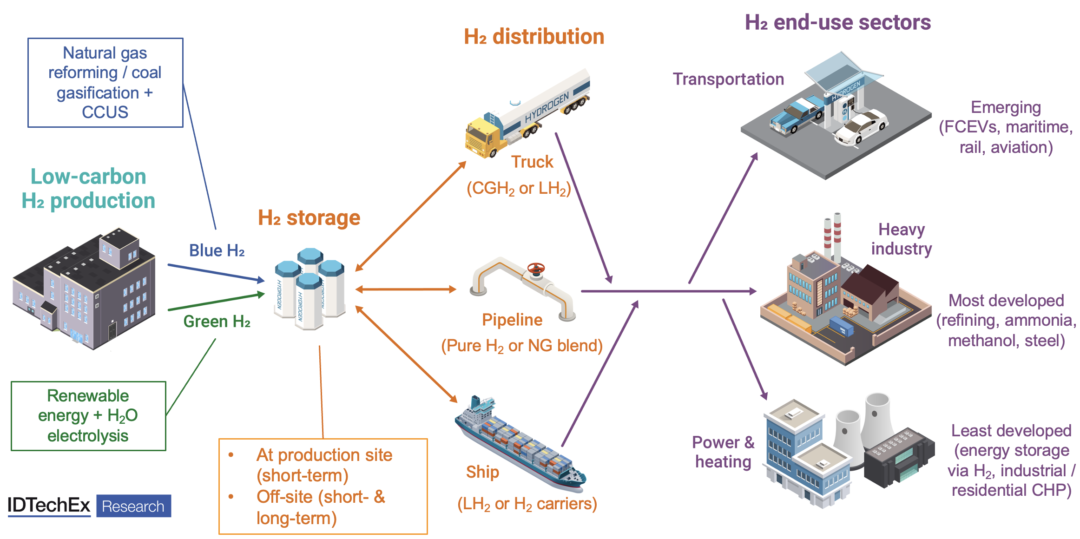Interest in hydrogen fuel cells grows, but research lags on fuel storage and transportation
IDTechEx study says funding will eventually catch up as global production could reach $130 billion by 2033.

Logistics and transportation providers have sharpened their interest in hydrogen fuel cells in recent months as they seek powerful and efficient ways to reduce their greenhouse gas emissions, but a new study from the analyst firm IDTechEx shows that scant attention has been paid to the “midstream infrastructure” needed to store and transport hydrogen gas.
Instead, the process has largely featured initiatives in the upstream development of low-carbon hydrogen production and downstream advancements in fuel cell technologies and industrial use cases, according to the study, "Hydrogen Economy 2023-2033: Production, Storage, Distribution & Applications."
Recent examples include funding for a hydrogen production plant that could operate off the coast of Belgium by 2026, an initiative by freight rail operators Canadian Pacific Kansas City (CPKC) and CSX Corp. to build hydrogen conversion kits for diesel electric locomotives, a similar partnership between Wabtec Corp. and General Motors, and a top-pick container handler built by Hyster Co. for the Port of Los Angeles.
But as hydrogen applications grow, they will increasingly need better transportation and storage to ensure the full potential of hydrogen as an industrial feedstock, fuel, and energy carrier, the study says.
According to IDTechEx, one challenge is that hydrogen must be highly compressed to be stored efficiently, since the lightweight gas has such low density at ambient conditions. A second challenge is that hydrogen pipelines currently exist only in restricted regions like parts of Texas and Louisiana around the Gulf Coast or in areas in France, Belgium, Netherlands, and Germany.
Solutions will depend on specific use cases, such as stationary hydrogen refueling stations that could use compressed gas and liquid hydrogen storage tanks. In contrast, smaller scale applications like refueling stations or pilot projects currently are currently supplied by trailers of compressed and liquid hydrogen.
Larger scale and longer-distance transport will necessitate additional pipelines, either running directly from production to end-use sites or feeding into pipeline networks. Those could be built on land through new construction, repurposing natural gas pipelines, or blending hydrogen into natural gas. But international long-distance transport would usually involve carrying liquid hydrogen on ocean vessels.
Despite those hurdles, funding into research of hydrogen storage and distribution technologies will likely expand as production and end-use sites increase. IDTechEx projects the global low-carbon hydrogen production market to reach $130 billion by 2033.
Related Articles
Copyright ©2024. All Rights ReservedDesign, CMS, Hosting & Web Development :: ePublishing